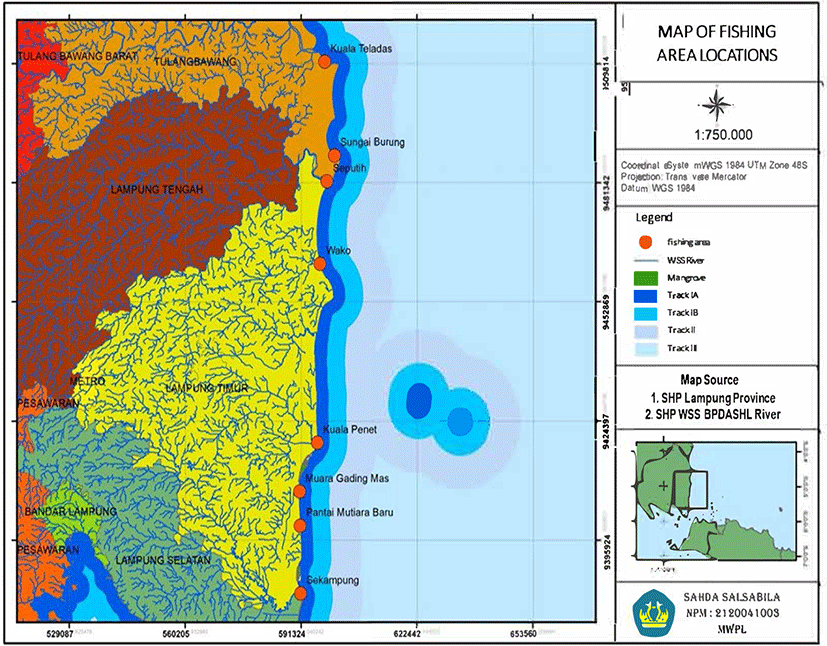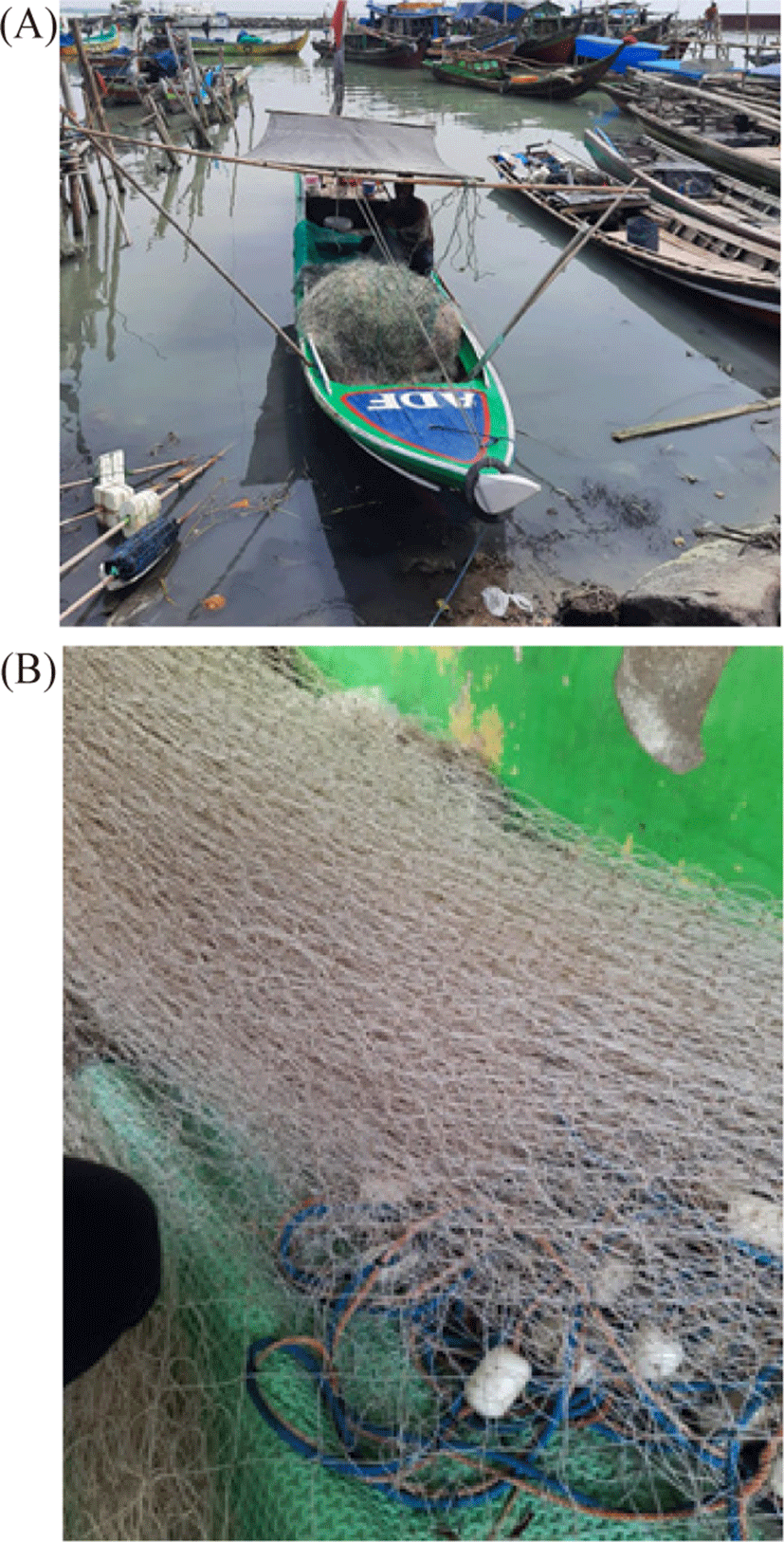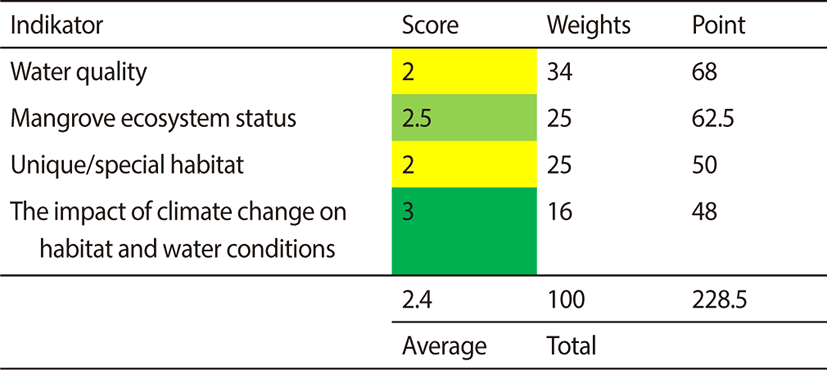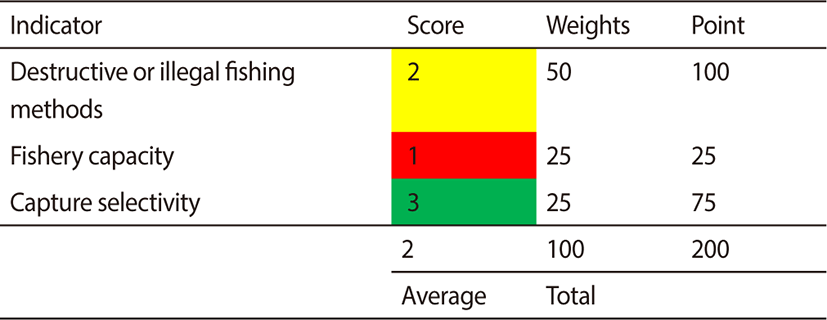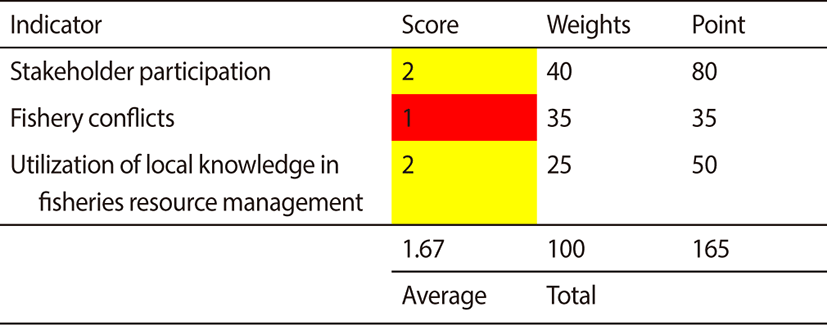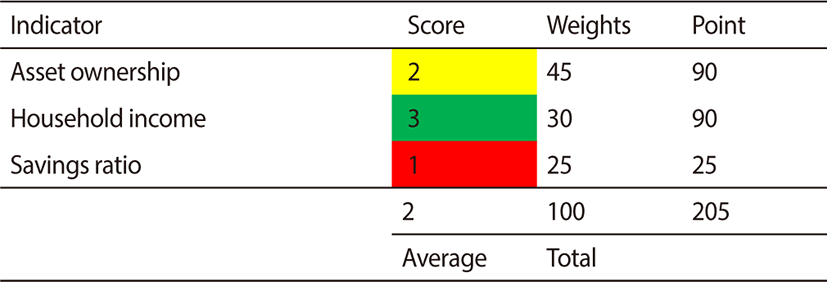Introduction
Small-scale fisheries provide sustenance and economic stability for millions of small-scale fishers and local communities in the sector (Béné, 2016; Thilsted et al., 2016). The phrase small-scale fisheries is employed to delineate a specific subset within the fisheries sector, distinguishing it from medium and large-scale fisheries. Due of the remarkable diversity of small-scale fisheries worldwide, it is challenging to establish a widely accepted definition (FAO, 2014, 2015).
The Food and Agriculture Organization (FAO) has provided a characterization of small-scale or artisanal fisheries as “traditional fisheries that involve fishing households instead of business entities, utilizing minimal capital and electricity, employing notably small fishing vessels (if any), undertaking brief fishing expeditions near the shore, primarily for local consumption within the community.” The specific definition of small-scale or artisanal fisheries may differ across countries, ranging from simple gathering or the use of a single-person canoe in less developed nations to the utilization of trawlers, seiners, or long-liners exceeding 20 meters in length in more advanced countries. Artisanal fisheries can serve as either subsistence or commercial fisheries, catering to local consumption or international trade. The classification of small-scale fisheries is further complicated by the variety of characteristics used to define them. Describing the structure of small-scale fisheries presents a challenge due to the varied characteristics utilized (Berkes et al., 2001) this includes the interchangeable use of terms such as small-scale fisher and small-scale fisheries, as well as subsistence and traditional practices (Halim et al., 2019).
Management efforts are crucial for the achievement of sustainable small-scale fisheries. In comparison to other industries, small-scale fisheries continue to be overlooked, with insufficient attention given to planning and regulatory frameworks, inadequate funding, and marginalization (Purcell & Pomeroy, 2015). In this instance, enhancing management capability is required to transition to small-scale fisheries that are sustainable.
The FAO Committee on Fisheries has endorsed the Ecosystem Approach to Fisheries Management (EAFM) as the most suitable and feasible method for implementing the Code of Conduct for Responsible Fisheries (Garcia & Prouzet, 2009). The implementation of an ecosystem-based management approach utilizing EAFM involves the integration of social and economic goals in fisheries management. This encompasses the well-being of fishermen, equitable utilization of fish stocks, and the incorporation of data, expertise, and uncertainties related to abiotic, biotic, and human factors within aquatic ecosystems (Mardyani, 2020).
The fisheries production in East Lampung Regency has reached 49,781 tons, accounting for 17.78% of the total fisheries production in Lampung Province, indicating its potential to be developed as a Minapolitan area. Labuhan Maringgai area has been designated as a Local Activity Center for fisheries development, with small-scale capture fisheries still being the dominant activity in the region.
Small-scale fishermen in Labuhan Maringgai frequently encounter challenges such as competition from migrant fishermen, competition over fishing equipment and fishing grounds, as well as environmental pollution. In order to enhance the productivity of small-scale fisheries in the area, it is essential to implement various conservation efforts. The research aims to accomplish the following objectives: (1) analyze the condition of small-scale capture fisheries in Labuhan Maringgai; (2) analyze the level of management of small-scale capture fisheries based on EAFM indicators; (3) formulate a small-scale capture fisheries management strategy based on the results of the EAFM indicator analysis
Research Method
The research was conducted in Labuhan Maringgai, East Lampung, Indonesia, from August to November 2022. Fishermen in East Lampung, particularly those residing in the coastal regions of Labuhan Maringgai District, typically make arrangements in November to greet the onset of the west season or West Monsoon Wind. During this period, the fish yield is generally plentiful.
Data for the fisherman respondents was gathered through the use of the stratified random sampling method, which involves selecting samples randomly based on specific criteria. The sample size of fishermen was calculated using the Slovin formula, with a margin of error set at 15% (Sugiyono, 2017) The research involved 1,414 small-scale fishermen, resulting in a sample size of 43 participants. The study used a stratified random sampling technique based on ship size (0–10 GT) and sea experience (minimum of 10 years). This approach was selected because of the diverse and proportionally stratified makeup of the population.
The EAFM begins with an assessment of current fisheries management practices and subsequently focuses on creating strategies to enhance management through the use of an ecosystem-based approach. The indicator components encompass six categories, specifically: habitat, fish resources, fishing technology, social, economic, and institutional. Every indicator possesses distinct criteria, ratings, and assessment weights. The criteria, scores, and assessment weights for each indicator are based on the indicator module for Fisheries Management with an Ecosystem Approach by Adrianto et al. (2014). This module is referenced in the Decree of the Directorate General of Capture Fisheries Number 18 of 2014, which provides technical instructions for assessing indicators for Fisheries Management with an Ecosystem Approach.
Evaluation of indicators using scores and weights in relation to the Fishery Management indicator module. Table 1 displays the indicator for fish capturing technique based on EAFM.
The EAFM indicator assessment employs the flag modelling technique, which is implemented using a multi-criteria analysis approach (Adrianto et al., 2005). The analysis is conducted using the following stages:
-
Identify the specific standards or guidelines for each measure within each domain of the EAFM, including fish resources, habitat, fishing practices, social aspects, economic factors, and institutional considerations;
-
Evaluate the effectiveness of each fishing grounds unit for each examined indicator using primary or secondary data sources;
-
Assign a Sai score to each i-th indicator in each domain using a Likert scale, with scores ranging from 1 to 3.
-
Determine the weight for each indicator based on the ranking (Wi) for each i-th indicator. The weight is computed based on the indicator’s level of influence within the domain. The weighting is determined on a scale ranging from 1 standard deviation to 100.
-
Carry out a composite assessment for each domain (Cat–i) with a simple formula:
where:
Cat – = Total EAFM value of a single indicator in a domain
Sai = attribute score to–i
Wi = attribut weights referring to–i
-
Develop an aggregate composite index for all domains (D) in the research unit with the following function model:
The basic formula for aggregate composite analysis is:
where:
Ave Dj = arithmetic mean of the jth domain of the total intermediate products Sai (score value of the ith indicator from the th domain –j); dan Wi (weights referring ranking of the i-th domain indicator –j).
The sum of each evaluated indicator is subsequently analysed using a straightforward composite analysis method that relies on arithmetic means. The results are then presented in the form of a flag model. The composite index is a numerical representation of the combined value of all domains. The EAFM component multiplication is translated into a numerical number ranging from 100 to 300. The scale conversion value for each domain is determined by computing the range between the minimum and maximum total scores for each indication, which is then divided into three categories. The calculation of the scale conversion value follows the formula :
where:
Nk−1 = class range for each domain
Cat−1 max = The maximum value of one attribute/indicator in the domain is obtained if all attributes/indicators have a score of 3.
Cat−1min = The minimum value of one attribute/indicator in the domain obtained if all attributes/indicators have a score of 3.
When evaluating the effectiveness of managing small-scale fisheries using the EAFM indicator approach, the indicator score limit for each domain is set at 1–3. The lowest score is represented by value 1, while the best score is represented by value 3. The scoring of each indicator aims to incorporate attribute values that are expressed in various units. The indicator scores for evaluating the effectiveness of small-scale fisheries management using the EAFM approach are presented in Fig. 1.

The EAFM domain composite evaluation consolidates the results of all composite indicators for each domain, assigning a domain score value based on the reference point for each domain attribute, ranging from 100 to 300. The scoring range is from 100 to 300, with 100 being the minimum and 300 being the maximum. This range is divided into three classes. The domain score values are displayed in Fig. 2.

EAFM domain values in the form of model flags is presented in Fig. 3.

The final EAFM aggregate score is assessed and categorized into three levels: low, medium, and good. A low aggregate number indicates a negative or unfavorable influence of the attribute, as well as a reduced impact of the parameters in that particular location.
Tactical decisions refer to the specific actions that management takes in response to fisheries data, as described by Bentley & Stokes (2014). When making tactical judgments, the process involves the following steps:
Result and Discussion
The current state of small-scale capture fisheries in Labuhan Maringgai is categorized into three fishing routes based on Ministry of Marine Affairs and Fisheries Regulation Number 18 of 2021. These routes are designated as fish routes IA IB, II, and III (Table 2). The regulation specifically addresses the placement of fishing equipment and aids in the Fisheries Management Areas of Indonesia and the High Seas, as well as the arrangement of fishing Andons.
Fishing areas in small-scale capture fisheries based on fishermen interviews include the coastal areas of Muara Gading Mas Beach (Labuhan Maringgai Coast), Sungai Putih, Kuala Penet, Sekampung, Kuala Teladas, Mutiara Beach, and Wako (Fig. 4). The majority of local fishermen engage in fishing activities within the coastal region of Muara Gading Mas Beach. In fishing lanes IA (coast–2 miles) and IB (2–4 miles) it is dominated by fishing vessels measuring 1–6 GT, fishing lane II (4–12 miles) is dominated by fishing vessels measuring 2–10 GT, and lane III (> 12 miles–EEZ) there are ships measuring 8 GT.
The utilization of fishing gear in routes I and II is primarily characterized by the same equipment (Fig. 5). However, in route III, trawl fishing equipment is employed. Consequently, numerous small-scale capture fisheries, employing a diverse range of fishing gear, are active in routes I and II. The catch obtained from these two areas is predominantly composed of pelagic and demersal fish species.
The utilization of play nets is specifically aimed at capturing mackerel, while rampus nets are designed for the same purpose. Additionally, traps are employed for the capture of crabs (Fig. 6). A few of the interviewed fisherman reported that the outcomes of their primary objectives were identical to those of their secondary objectives, with some even claiming that the secondary objectives yielded greater results. These fishermen employ several types of fishing gear, such as trawls, including purse seines (sondong), encircling nets (payang), and towed nets (cantrang).

Boat 1 GT is an engine-free boat that is manually propelled by paddles. Small-scale fishing boats are powered by a variety of motorcycle and automobile engines. Table 3 lists the many types of engines used in small-scale fishing vessels. The type and power of the engine utilized increases with the size of the vessel (Fig. 5).
The primary fishing equipment utilized by small-scale fishermen in Labuhan Maringgai consists of nets, traps, play nets, crab nets, rampus, payang, and sondong. The predominant form of fishing gear utilized is nets, whereas the least utilized is rampus. There is a tendency for the amount of fishing gear utilized to grow in comparison to the previous year.
Range collapse refers to a significant decrease in the geographical extent or spatial coverage of marine ecosystems that typically support specific fish populations. An observable sign of range collapse is the increasing challenge in locating suitable fishing grounds, as the fish are progressively moving away from their previous habitats. This spatial reduction in fish biomass makes it increasingly arduous to capture the affected fish resources (Adrianto et al., 2014). The findings from the evaluation of the collapse of the fishing range indicate that the majority of the fishermen (79%) perceive fishing as progressively challenging and reliant on the availability of fish. This situation arises from the escalating competition posed by both local and migrant fishermen in their search for fish. Moreover, there has been a rise in the quantity and magnitude of the fishing fleet, accompanied by a diverse range of fishing equipment being utilized. Consequently, small-scale fishermen are encountering growing difficulties due to their restricted fishing range and limited access to advanced technology.
In this instance, species classified as endangered, threatened, and protected (ETP) fall under the category of the The International Union for Conservation of Nature (IUCN) Red List, which defines what constitutes ETP species. Endangered or endangered species are those that face an extremely high risk of extinction in the natural world. A rating of “threatened” indicates that it faces extinction soon. It is necessary for conservation activities to be governed by law since protected species are those whose survival in the wild is in jeopardy or nearly extinct. Fishing is not sustainable if its effects on ETP species are negative, according to the ETP species indicator. The ETP species that fisherman collect are turtles; however, as part of a conservation effort, they release the turtles back into the wild.
The fishing fleet in Labuhan Maringgai based on fisheries statistical data sourced from Associaton of Fishermen in Indonesia (HNSI) East Lampung, KUPP Class III Labuhan Maringgai, and SPBU-N (gas station) Bina Mina totals around 1,579 vessels. Small-scale capture fisheries in Labuhan Maringgai are dominated by vessels < 5 GT in size (Fig. 4). When compared with the number of vessels in 2021, it can be seen that there has been an increase in the number of vessels except for the size 0–5 GT, however small-scale fishing vessels (> 10 GT) still dominate each year.
A boat weighing 1 GT is a boat without a motor/engine, so it is moved manually with paddles. The engines used on small-scale fishing vessels consist of motorbike and car engines with various powers. In general, the engines used on small-scale fishing vessels (2–10 GT) are dompeng 24 PK and car engines are Mitsubishi or known as PS. The ships are still made of wood.
The most common fishing gear used by Labuhan Maringgai’s small-scale fisherman is nets, traps, toy nets, and crab nets. Nets are the most often used sort of fishing gear, whereas rampus is the least common. The common fish species landed at Coastal Fishing Port Labuhan Maringgai include mackerel, tuna, and squid. Pelagic fish exhibit a higher species diversity compared to other fish groups, whereas demersal fish also show a greater variety. According to the arrival report data, the majority of fish species and quantities come from vessels exceeding 10 GT (84%), with only 16% originating from small-scale fishing vessels (1–10 GT). This disparity can be attributed to the fact that most small-scale fishermen prefer to sell their catch directly to supervisors or bosses rather than through auctions. In Labuhan Maringgai, small-scale fishermen typically have affiliations with supervisors or bosses, indicating a patron-client relationship. This type of relationship involves an exchange dynamic where individuals of higher economic status (patrons) offer protection and benefits to those of lower status (clients).
Fishermen have agreements with supervisors/bosses due to several things, including:
-
Operational costs, ship maintenance, fishing equipment, are borne by the coach/boss.
-
The coach/boss can lend money during the lean season or unfavorable sea weather.
-
Fishermen get business guarantees and marketing certainty.
-
Fishermen sell their catch to the supervisor/boss at a selling price determined by the supervisor/boss.
The “patron-client” pattern of work interactions refers to an exchange relationship between the two positions in which those with greater economic status (patrons) utilize their resources and influence to protect and benefit others with lower status (clients). Next, the customer offers products or services in exchange (Samudera & Humsona, 2018).
Through an assessment of the current state of small-scale fisheries using an EAFM, which is observed from all aspects, namely the fish resource domain, habitat and ecosystem, fishing techniques, social, economic, and institutional factors, the status of small-scale capture fisheries management will be specifically examined.
The criteria used to evaluate the fish resource domain include standard catch per unit effort (CPUE), trends in fish size, proportion of juvenile fish caught, species composition of catches, range of fish resource collapse, and ETP species (Fig. 7). The overall analysis of the fish resource domain resulted in a total score of 195 with an average of 1.92. Generally, the condition of the fish resource domain is considered to be in the medium range. The standard CPUE value was determined by interviewing fishermen about their catch levels over the past five years. A significant 67% of the fishermen surveyed reported a decrease in their catch numbers.
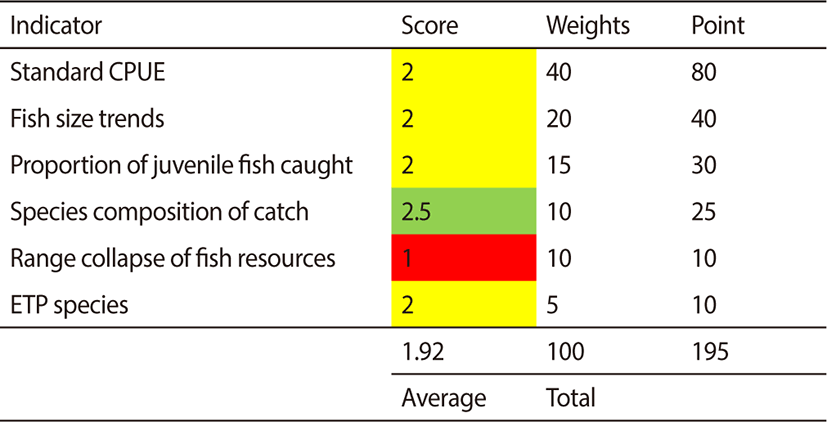
The Payang fishermen utilize a mesh size of 0.8 inches, which is considered small. This small mesh size results in a low selection factor, leading to the capture of numerous small fish (Dewanti et al., 2014). By employing a relatively small mesh size of 1 inch, it is inevitable that fish below the standard length for maturity are also caught. The Sero fishing gear, due to its significantly small mesh size, is classified as environmentally unfriendly in terms of mesh aspect (Tenriware et al., 2018). According to the findings derived from the interviews conducted with respondents, it was observed that the utilization of gill nets, play nets, and rampus featuring small mesh sizes, specifically less than 2 inches, encompassed a wide range of mackerel and small mackerel sizes.
Sea turtle conservation in Indonesia has been included in Government Regulation (PP) Number 7 of 1999 concerning Preservation of Plant and Animal Species. Fishermen’s social customs associated with conservation involve the practice of releasing turtles back into the sea. This is rooted in their belief that capturing turtles can bring about negative consequences, and they are also concerned about potential legal repercussions.
Several types of rays and sharks are caught by fishermen, but these species are not included in the ETP category. The types of rays and sharks that are commonly caught include the blue spotted ray (Neotrygon kuhlii), the mondol ray (Himantura gerrardi), the frog ray (Dasyatis kuhlii), and the group of sharks from the Squalidae. The type of ray protected under Government Regulation (PP) Number 7 of 1999 is the Sentani ray (all types of the Pristis genus). Stingrays are protected fish species based on Decree of the Minister of Maritime Affairs and Fisheries Number 1 of 2021 concerning the protection of fish species, including spotted river stingrays, giant river stingrays, white edge river stingrays, pointed sawfish stingrays, dwarf sawfish stingrays, sawtooth stingrays. large, green saw ray, and kai ray. Shark species found in Indonesia are under the ETP category (Dharmadi & Fahmi, 2013) and can be seen in Table 4.
Indicators within the realm of habitat and aquatic ecosystems encompass water quality, the state of mangrove ecosystems, distinctive or exceptional habitats, and the influence of climate change on habitat and aquatic conditions. The composite analysis of indicators for these domains yields a medium classification, with a value of 228.5 and an average score of 2.4 (Fig. 8). In general, the status of the habitat and ecosystem domains indicates a medium level.
Indicators of water quality are assessed to ascertain the degree of pollution in the water as well as the state of the aquatic ecosystem. An influence that may be detrimental to ecosystems, resources, human health, biota, and other use values is known as water pollution. Water quality indicator findings are categorized as medium.
Based on data from water quality monitoring carried out by the Ministry of Environment and Forestry, Directorate of Pollution and Coastal and Marine Damage Control, Lampung Province in 2022, the sea water quality index is classified as good with an average value of 78.82. The parameters used in sea water quality index analysis are listed in the Regulation of the Minister of Environment and Forestry of the Republic of Indonesia No. 27 of 2021 concerning the Environmental Quality Index including total dissolved solids, dissolved oxygen, total ammonia, ortho-phosphate, and fatty oils.
However, the turbidity value obtained is relatively high, namely 20.48, which based on the Decree of the Minister of Environment Number 51 of 2004 concerning Sea Water Quality Standards, this value exceeds the quality standard for marine biota with a turbidity value of < 5 NTU. The water quality measurement location point is close to the mouth of the village river. River flow from land to sea waters is assumed to be the source of the high degree of turbidity. This discharge includes dissolved particles, organic and inorganic elements, and debris (Hamuna et al., 2018).
Fishing capacity, fishing selectivity, and damaging or illegal fishing methods make up the indicators for the fishing technique domain. According to several research, the operation method of trawl makes it damaging. Dredging the bottom of deep waters is how it operates, causing harm to the habitats, breeding grounds, and coral reef ecosystems (Kartika, 2017).
Destructive or illegal fishing techniques have a medium indication score (Salsabila et al., 2022). According to supervisory data, it was determined that there were a total of 7 instances of violations related to the use of prohibited fishing gear by vessels with a measurement of 6–10 GT. Among the prohibited fishing gear found in Labuhan Maringgai was the use of cantrang/trawl.
The use of cantrang fishing gear is not permitted in the Regulation of the Minister of Maritime Affairs and Fisheries of the Republic of Indonesia Number 18 of 2021 concerning the Placement of Fishing Gear and Fishing Aids in the Fisheries Management Areas of the Republic of Indonesia and the High Seas and the Arrangement of Fishing Andons. Fishermen continue to prefer using cantrang/trawl fishing gear due to its effectiveness in yielding a significant quantity of fish. This fishing gear is capable of capturing large quantities of fish, making it a preferred choice. Moreover, cantrang nets are known for their low maintenance requirements and hassle-free operation. The nets are designed to sweep a specific groove, which encompasses an area determined by the length of the groove and the width of the net mouth. This design feature further enhances the efficiency of cantrang fishing gear (Mahendra et al., 2015).
Efforts to reduce the rate of destructive and illegal fishing activities are:
The fishery capacity and fishing effort indicator score of 1 signifies that the fishery capacity ratio is below 1, specifically at 0.8. This suggests a potential trend towards overcapacity, which could result in overfishing. The expansion of fishing activities’ capacity is evident through the increase in the number of larger fishing fleets. The repercussions of overcapacity are beginning to affect small-scale fishermen as their catches are dwindling compared to previous years. This aligns with a research conducted by Aqualdo & Wati (2014), which highlights a decline in catches as an overfishing indicator. Strategies to enhance capacity include reducing excess input, such as effort control by cutting down on trips during specific seasons and downsizing ships, as well as controlling effort by reducing trips during peak catch seasons (Salsabila et al., 2022).
Because fishing is an environmentally benign activity, its selectivity can be attributed to the great selectivity of the fishing gear used, which can positively affect the sustainability of fish stocks.
Rampus nets are considered as selective fishing gear due to the customization of mesh size based on the specific type and size of fish being targeted for capture (Dirja & Fahmi, 2020). The folding trap fishing equipment designed for crabs exhibits a high level of selectivity, as evidenced by Baihaqi et al. (2021), who observed that the initial crab size (Lc) captured using folding trap gear indicated superior selectivity compared to alternative fishing gear.
Small-scale fishermen in Labuhan Maringgai commonly utilize various types of non-selective fishing gear, including trawls (sondong), bag trawls (payang), and drag trawls (cantrang). The non-selective nature of trawling stems from its operational method, which involves sweeping the bottom and employing a relatively small net. Consequently, while the primary target species are captured, numerous non-target species are also unintentionally caught.
The assessment results of all indicators of fishing technique aspects can be seen in Fig. 9. Composite analysis totaled 200 with an average score of 2. Overall status of aspects of fishing techniques in small scale capture fisheries is medium.
Fisheries management aims to achieve various goals, one of which is to ensure the social well-being of fishing communities. Within the social domain, indicators such as stakeholder participation, fisheries conflicts, and the incorporation of local knowledge in fish resource management are considered. The composite analysis of these social indicators reveals a value of 165 and an average score of 1.67, indicating a classification of poor (Fig. 10).
The evaluation of indicators for stakeholder participation is considered to be of moderate level. Previously, the district was responsible for granting licenses to small-scale vessels with a measurement of 0–5 GT. However, currently, the province has taken over the authority to license vessels of all sizes. One of the main challenges faced in this process is the scarcity of human resources available in the field to provide assistance. The storage of documents for vessels measuring 0–7 GT is located in the district, while those measuring 7 GT and above are stored at the Office of Harbor Master and Port Authority (KSOP). The management of conservation areas falls under the jurisdiction of the province. The involvement of stakeholders at both the provincial and district levels in fisheries management activities holds significant importance. Various initiatives and programs have been implemented, including licensing outlets, support from Non-Governmental Organization focusing on sustainable management, assistance with fishing gear, and training programs to enhance the competency of fishermen. However, certain programs, such as licensing outlets and fisherman competency training, still face challenges in terms of their effective implementation due to limited financial resources.
The extent of fisheries disputes in Labuhan Maringgai is deemed to be high. As per the findings of the maritime and fisheries resources supervision (PSDKP) report, there are three instances of conflicts involving local fishermen and migrant fishermen. These conflicts encompass clashes between purse seine or boukeami vessels and local fishermen, as well as conflicts between squid fishing vessels from Banten and local fishermen. The conflicts involving purse seine vessels usually arise due to their interference with other fishing equipment, such as nets.
The composite analysis of local knowledge indicators among small-scale fishermen in Labuhan Maringgai reveals a moderate result. While there is no overarching local knowledge system for the utilization of fisheries resources in Labuhan Maringgai, fishermen commonly rely on individual experience for information such as fish locations and fishing seasons. The majority of fishermen continue to depend on personal knowledge, experience, and insights from other fishermen to identify fishing spots, although a few also utilize GPS technology as a supplementary tool.
The economic domain comprises of three types of indicators: household income, asset ownership, and savings ratio. The composite analysis yielded 205 outcomes with an average score of 2, based on economic domain indicators (Fig. 11). The economic sphere is currently in a medium state overall. Income from the catch fisheries industry is used to calculate household fishery income. Indicator of household income for small-scale fisherman in Labuhan Maringgai is rated as good. Fisheries household income receives a high value because the income value is greater than the East Lampung District Minimum Wage of Rp2,432,150. The engine power of the boat used and fishermen’s seafaring experience influence fishermen’s income. According to Rahim et al. (2018), the magnitude of the engine power is positively correlated with the income of fishermen. Therefore, an increase in engine power can lead to a higher income for fishermen as it influences the range of fishing grounds.
The result of the savings ratio of small-scale fishermen in Labuhan Maringgai is classified as low because the obtained savings ratio value is –7.63%, which is lower than the Bank Indonesia interest rate in 2022 of 3.61%. Retnowati (2011) claimed that the cultural practices and living habits of fishermen often involve wasteful spending, with earnings from fish harvests being quickly depleted without any thought given to saving. This lack of financial consciousness results in inadequate money management, causing fishermen to fall into debt during periods of low catch or poor seasons. In most cases, fishermen end up owing money to their employers, boat builders, ship owners, or suppliers.
Institutional domain indicators encompass adherence to both formal and informal regulations, comprehensiveness of rules within fisheries management, decision-making processes, fisheries management strategies, degree of policy and institutional coherence, and stakeholder capabilities. The evaluation of the combined institutional indicators reveals a moderate classification, with a total value of 210.8 and an average rating of 2.13 (Fig. 12).
The Flag modeling technique is used to see the status or category of indicator assessments that have been carried out. The aggregate composite index of EAFM indicators is carried out by adding up the indicators in each domain (Fig. 13). According to the classification of domain values in the EAFM, the fisheries management status is determined to have a cumulative value of 1,204.3, which encompasses the medium status.
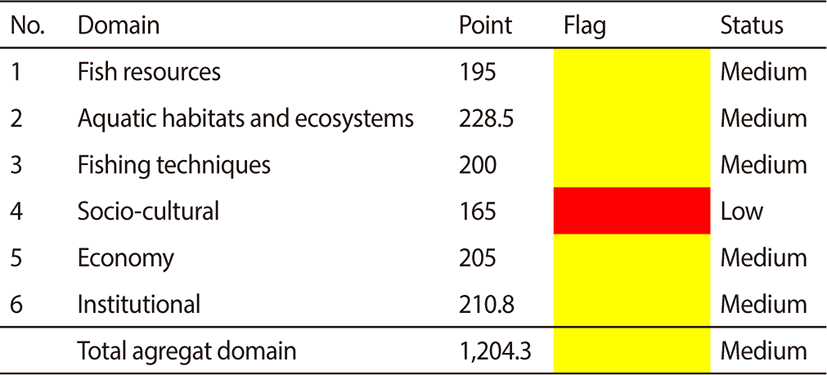
Labuhan Maringgai, East Lampung is home to small-scale capture fisheries that are classified as having a medium status. However, the values associated with these fisheries tend to be on the lower end of the spectrum. Specifically, the social domain composite value is categorized as low. This classification can be attributed to various factors, including conflicts of interest, the level of compliance, and the effectiveness of capacity building efforts.
Conclusion
In Labuhan Maringgai, East Lampung, the small-scale capture fisheries sector is primarily characterized by vessels ranging from 1 to 5 GT in size. These vessels commonly utilize various types of fishing gear such as nets, payang, play nets, traps, crab nets, and rampus. The main catches obtained from these fisheries include mackerel, anchovies, crab, shrimp, mackerel, and squid. The management status of the small-scale capture fisheries in this area is classified as medium, but tends to lean towards being low. This is reflected in the composite value of the social domain, which is classified as low. To ensure the conservation of Indonesian fisheries, a fisheries management strategy has been implemented. This strategy involves making tactical decisions that prioritize standard CPUE indicators, the prevention of fish resource collapse, maintaining water quality, enhancing fisheries capacity, resolving fisheries conflicts, improving the savings ratio, and ensuring compliance with responsible fisheries principles. These measures are crucial in safeguarding the sustainability of Indonesian fisheries.








